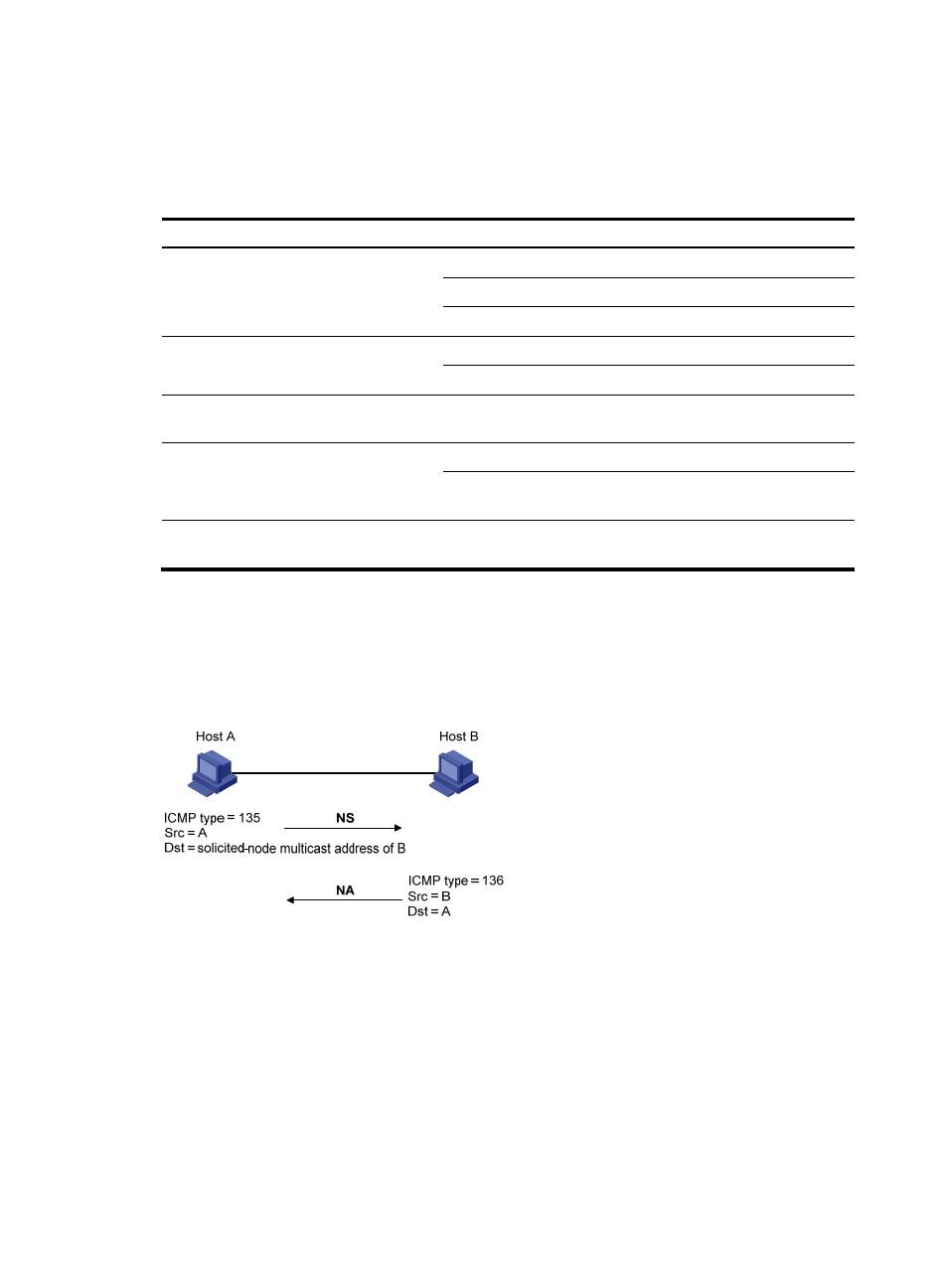Ipv6 nd protocol, Address resolution, Dhcp snooping configuration examples – H3C Technologies H3C S12500-X Series Switches User Manual
Page 123: Basic dhcp snooping configuration example

112
IPv6 ND protocol
The IPv6 Neighbor Discovery (ND) protocol uses the following ICMPv6 messages:
Table 7 ICMPv6 messages used by ND
ICMPv6 message
Type
Function
Neighbor Solicitation (NS)
135
Acquires the link-layer address of a neighbor.
Verifies whether a neighbor is reachable.
Detects duplicate addresses.
Neighbor Advertisement
(NA)
136
Responds to an NS message.
Notifies the neighboring nodes of link layer changes.
Router Solicitation (RS)
133
Requests an address prefix and other configuration information
for autoconfiguration after startup.
Router Advertisement (RA)
134
Responds to an RS message.
Advertises information, such as the Prefix Information options
and flag bits.
Redirect 137
Informs the source host of a better next hop on the path to a
particular destination when certain conditions are met.
Address resolution
This function is similar to ARP in IPv4. An IPv6 node acquires the link-layer addresses of neighboring
nodes on the same link through NS and NA messages.
shows how Host A acquires the
link-layer address of Host B on the same link.
Figure 46 Address resolution
The address resolution procedure is as follows:
1.
Host A multicasts an NS message. The source address of the NS message is the IPv6 address of the
sending interface of Host A and the destination address is the solicited-node multicast address of
Host B. The NS message body contains the link-layer address of Host A and the target IPv6
address.
2.
After receiving the NS message, Host B determines whether the target address of the packet is its
IPv6 address. If yes, Host B learns the link-layer address of Host A, and then unicasts an NA
message containing its link-layer address.
3.
Host A acquires the link-layer address of Host B from the NA message.
